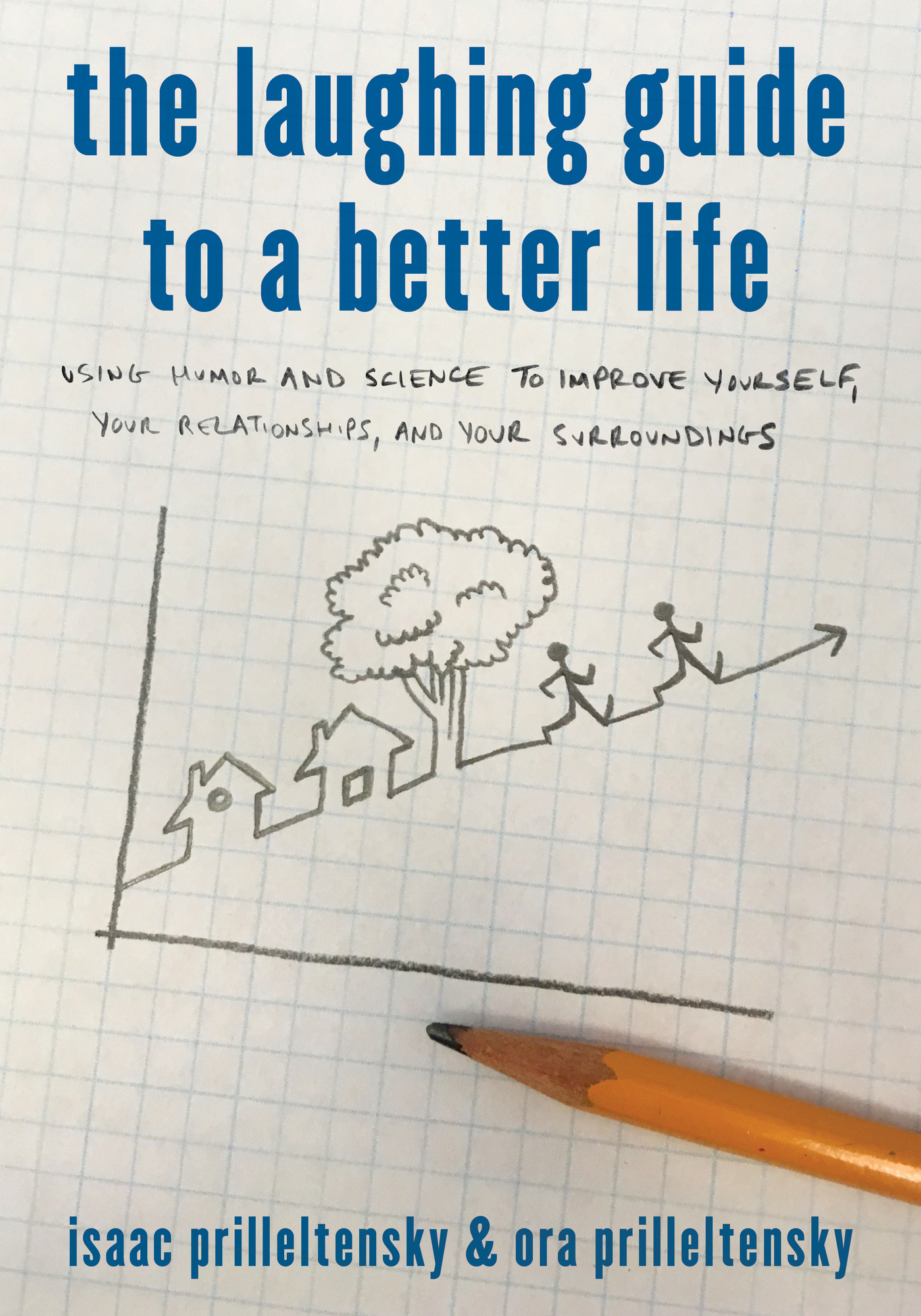The Laughing Guide to a Better Life
The Laughing Guide to a Better Life
Using Humor and Science to Improve Yourself, Your Relationships, and
Your Surroundings
Isaac Prilleltensky and
Ora Prilleltensky
ROWMAN & LITTLEFIELD
Lanham Boulder New York London
Published by Rowman & Littlefield
An imprint of The Rowman & Littlefield Publishing Group, Inc.
4501 Forbes Boulevard, Suite 200, Lanham, Maryland 20706
www.rowman.com
Unit A, Whitacre Mews, 26-34 Stannary Street, London SE11 4AB
Copyright 2019 by The Rowman & Littlefield Publishing Group, Inc.
All rights reserved. No part of this book may be reproduced in any form or by any electronic or mechanical means, including information storage and retrieval systems, without written permission from the publisher, except by a reviewer who may quote passages in a review.
British Library Cataloguing in Publication Information Available
Library of Congress Cataloging-in-Publication Data
Names: Prilleltensky, Ora, 1959 author. | Prilleltensky, Isaac, 1959 author.
Title: The laughing guide to a better life : using humor and science to improve yourself, your relationships, and your surroundings / Isaac Prilleltensky, Ora Prilleltensky.
Description: Lanham, Maryland : Rowman & Littlefield, [2019] | Includes bibliographical references and index.
Identifiers: LCCN 2018032964 (print) | LCCN 2018035040 (ebook) | ISBN 9781475846386 (electronic) | ISBN 9781475846379 (cloth : alk. paper)
Subjects: LCSH: Change (Psychology) | Laughter. | Self-realization.
Classification: LCC BF637.C4 (ebook) | LCC BF637.C4 P748 2019 (print) | DDC 158.1dc23
LC record available at https://lccn.loc.gov/2018032964
 TM The paper used in this publication meets the minimum requirements of American National Standard for Information Sciences Permanence of Paper for Printed Library Materials, ANSI/NISO Z39.48-1992.
TM The paper used in this publication meets the minimum requirements of American National Standard for Information Sciences Permanence of Paper for Printed Library Materials, ANSI/NISO Z39.48-1992.
Printed in the United States of America
To Matan and Elizabeth
Preface
This is the third book in The Laughing Guides trilogy. The books are about creating a better life for yourself and others in the community. The first one, The Laughing Guide to Well-Being, used humor and science to become happier and healthier. The second, The Laughing Guide to Change, focused on mastering three drivers of change: behaviors, emotions, and thoughts. The present book is concerned with improving yourself, your relationships, and your surroundings.
While the first book introduced a research-based theory of well-being, the second and third focus on strategies for change. Each book can be read independently, but you will get the most impact, and the most laughs, by reading them all. You can read them in any order you wish.
The three books use a heavy dose of humor (the laughing side), and a healthy measure of science (the learning side). In the laughing side of each chapter, we review the skills through humor. In general, youll see that our problems derive from overdoing something or not doing enough of it.
Most neurotics like Isaac tend to worry too much, exercise too much, think about what they eat too much, work too much, plan too much, and overall obsess too much. On the other hand, some folks dont think enough about what they eat, dont pay enough attention to work, and they are overall clueless about their impact on other people. See if you find yourself, or anyone you know, in any of the stories. The motto of this book is smarter through laughter. If you can laugh about it, you can probably change it.
Acknowledgments
We gratefully acknowledge the work of our research team in building with us an intervention (www.funforwellness.com) based on the ideas reported in this book. We appreciate the contributions of Samantha Dietz, Adam McMahon, Nick Myers, and Carolyn Rubenstein. We also thank Patrizia Rizzo for help with the references and Yvette Carpintero for general support for Isaac as executive assistant extraordinaire. Michael Lewis of Miami Today graciously allowed Isaac to reproduce some humor columns previously published in his weekly newspaper. We also thank our editors at Rowman & Littlefield, Tom Koerner and Carlie Wall, for their support and guidance.
Chapter 1
Ease into a Better Life
The Learning Side
I CAN Model
The I CAN model stands for interactions, context, awareness, and next steps. Interactions are powerful determinants of health and happiness. Family and friends can be our best allies or our worst enemies. We must find ways to assert our needs and engage in reciprocal relationships.
Context is also a powerful but often neglected driver of change. The contexts of our lives consist of people, places, and things. Together, they exert enormous influence on our behavior. Marketing, for example, is all about context: how to sell a particular product, where to place chocolate bars in the supermarket, and what images to use in magazines.
To leverage context to our advantage we need to master the art of reading cues and changing cues. Putting a fruit bowl on the kitchen table is a reminder to eat natural things when we need a sugar kick. Leaving your gym clothes next to your bed is a prompt to exercise first thing in the morning; its all about our surroundings.
Awareness is the next driver of change. There are two kinds that we should master: know yourself and know the issue. Knowing yourself means being a good detective. Thinking about when I feel best and when I eat worst are good places to start, but to make positive changes, we also need to know something about the issue were tackling. Am I feeling depressed, am I in a bad relationship, do I feel stuck at work? For every possible challenge you need to tackle there is a wealth of information, and well encourage you to become an informed consumer. Do not relinquish control of your life to others. Do your research.
Every step of the way requires a next step. This is why we call the fourth driver of change next steps. Regardless of where you are in the process of change, there is always a next step to strengthen your change, maintain your gains, and keep thriving. To do that, you need to make a plan, and you need to make it stick. We devote the last chapter to these skills.
When you combine behaviors, emotions, and thoughts, the subject of The Laughing Guide to Change, with interactions, context, awareness, and next steps, the subject of this book, you end up with a model called BET I CAN. These seven drivers present many opportunities. I can work on my thoughts, emotions, or behaviors. I can improve my communication skills and my relationships. I can modify my surroundings to make them healthier. I can remove junk food from my house to eliminate temptations. I can increase my awareness about the health benefits of exercise.
Changes in any of the BET I CAN drivers can empower you to make improvements in areas of life that are important to you. The advantage of using BET I CAN drivers is that they occur naturally and dont require major life adjustments. For some people it is easier to change a behavior than a thought. For others, it is a priority to change how they feel or how they interact with others. The point is to experience success in one domain of life to increase your feeling of competency. Once you gain confidence it is easier to tackle other domains where the challenges are bigger.
Next page
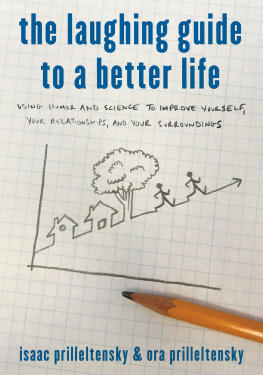
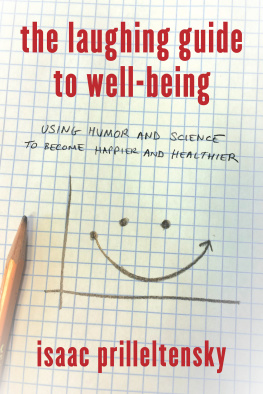
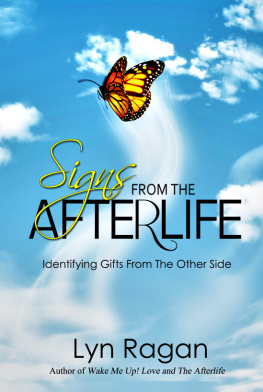
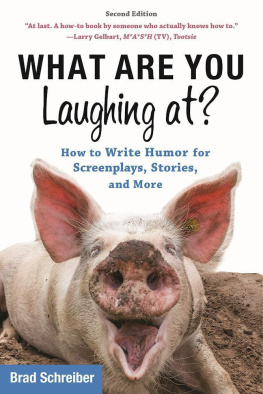
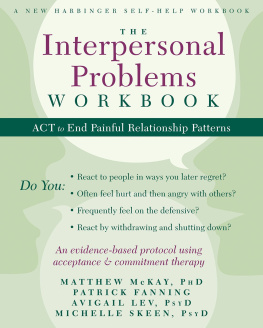
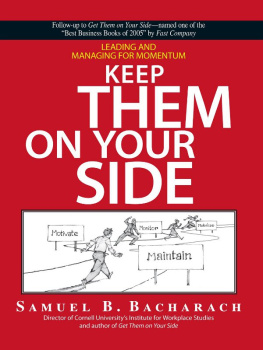

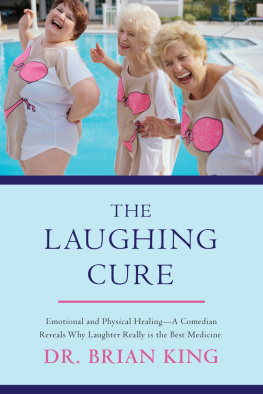
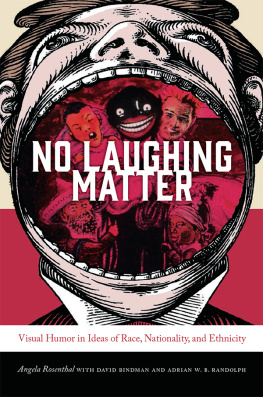
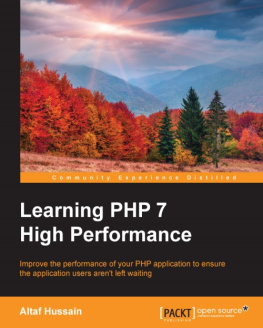

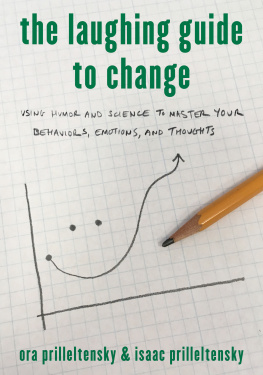
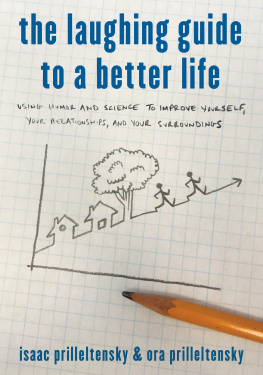
 TM The paper used in this publication meets the minimum requirements of American National Standard for Information Sciences Permanence of Paper for Printed Library Materials, ANSI/NISO Z39.48-1992.
TM The paper used in this publication meets the minimum requirements of American National Standard for Information Sciences Permanence of Paper for Printed Library Materials, ANSI/NISO Z39.48-1992.